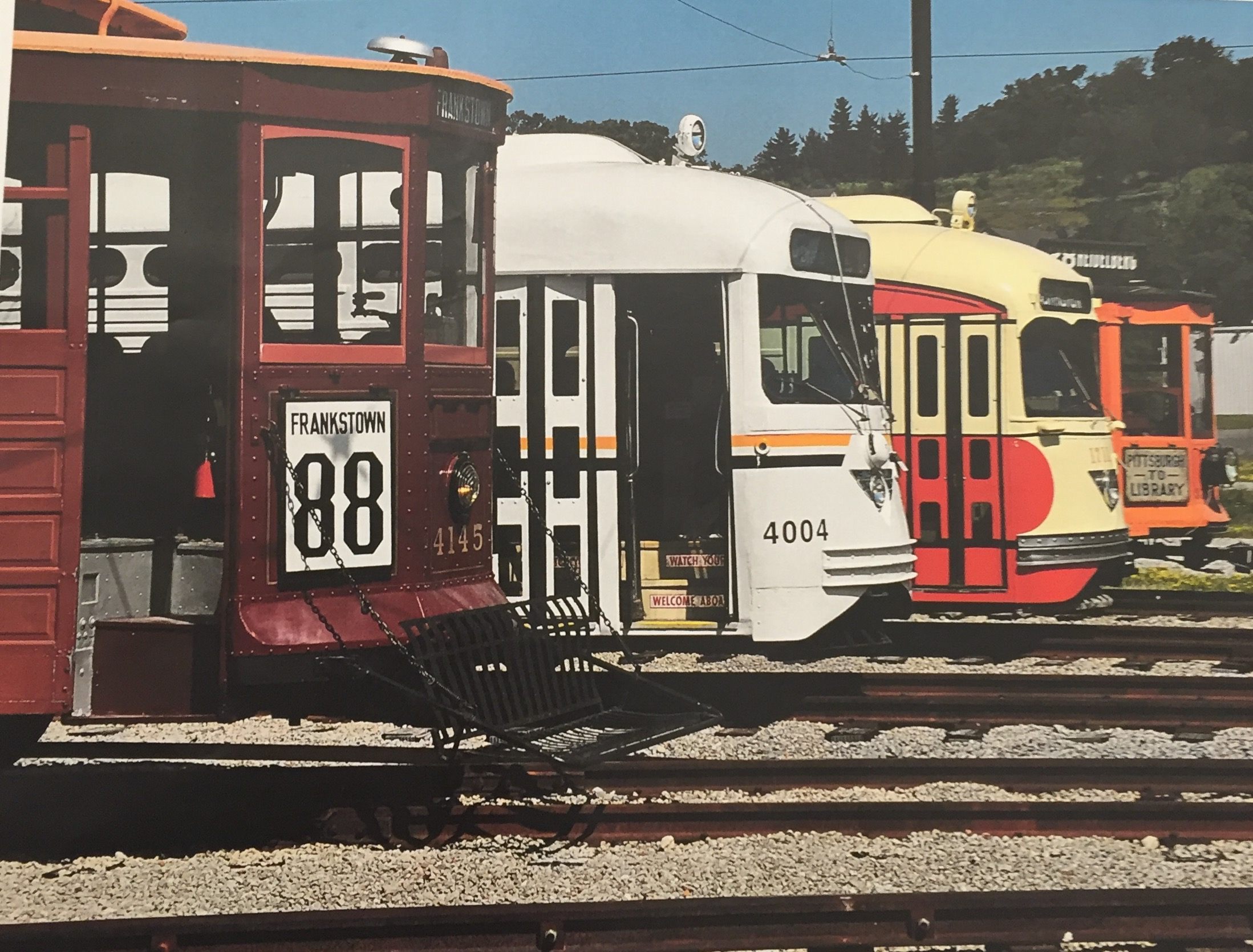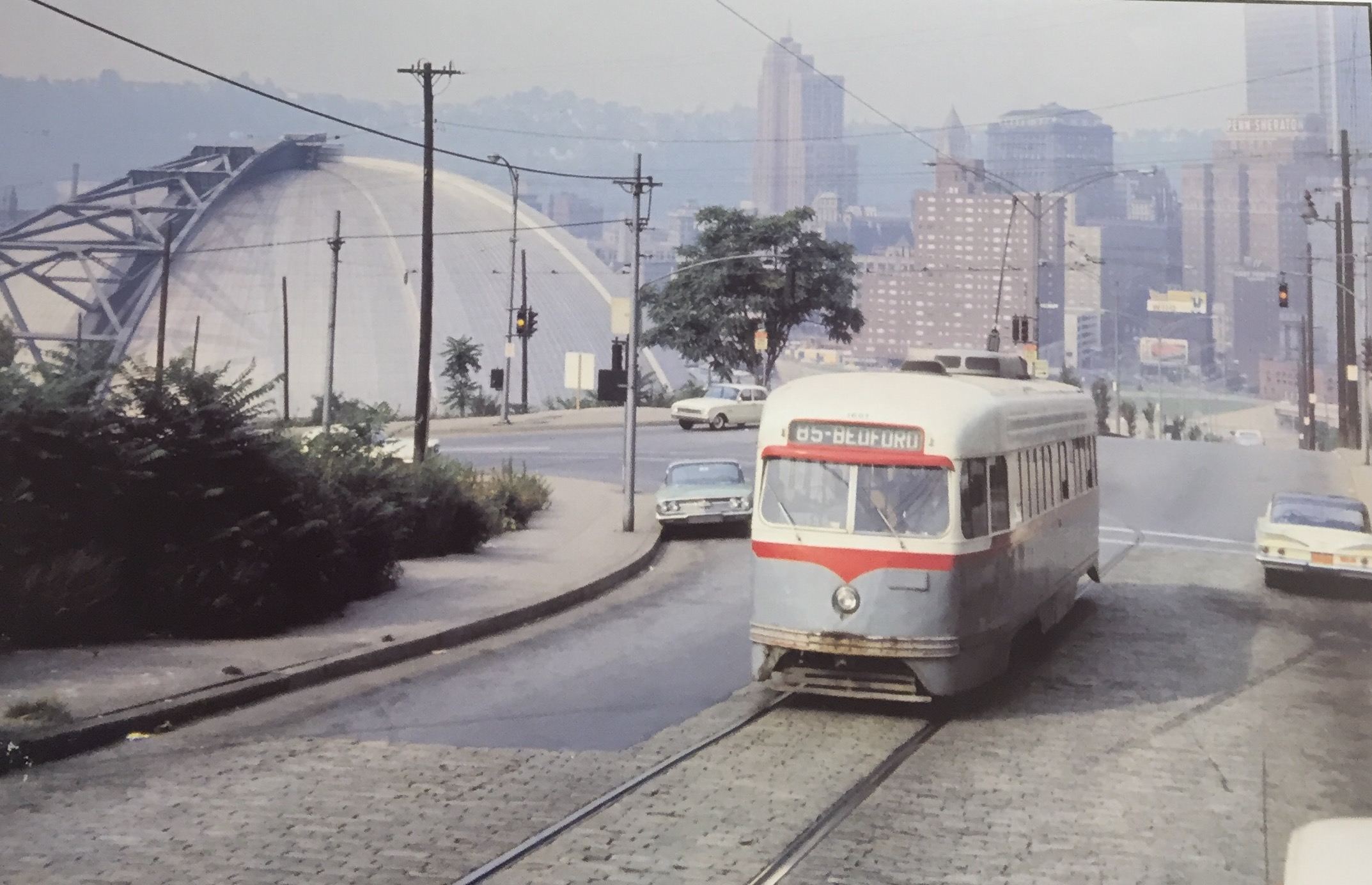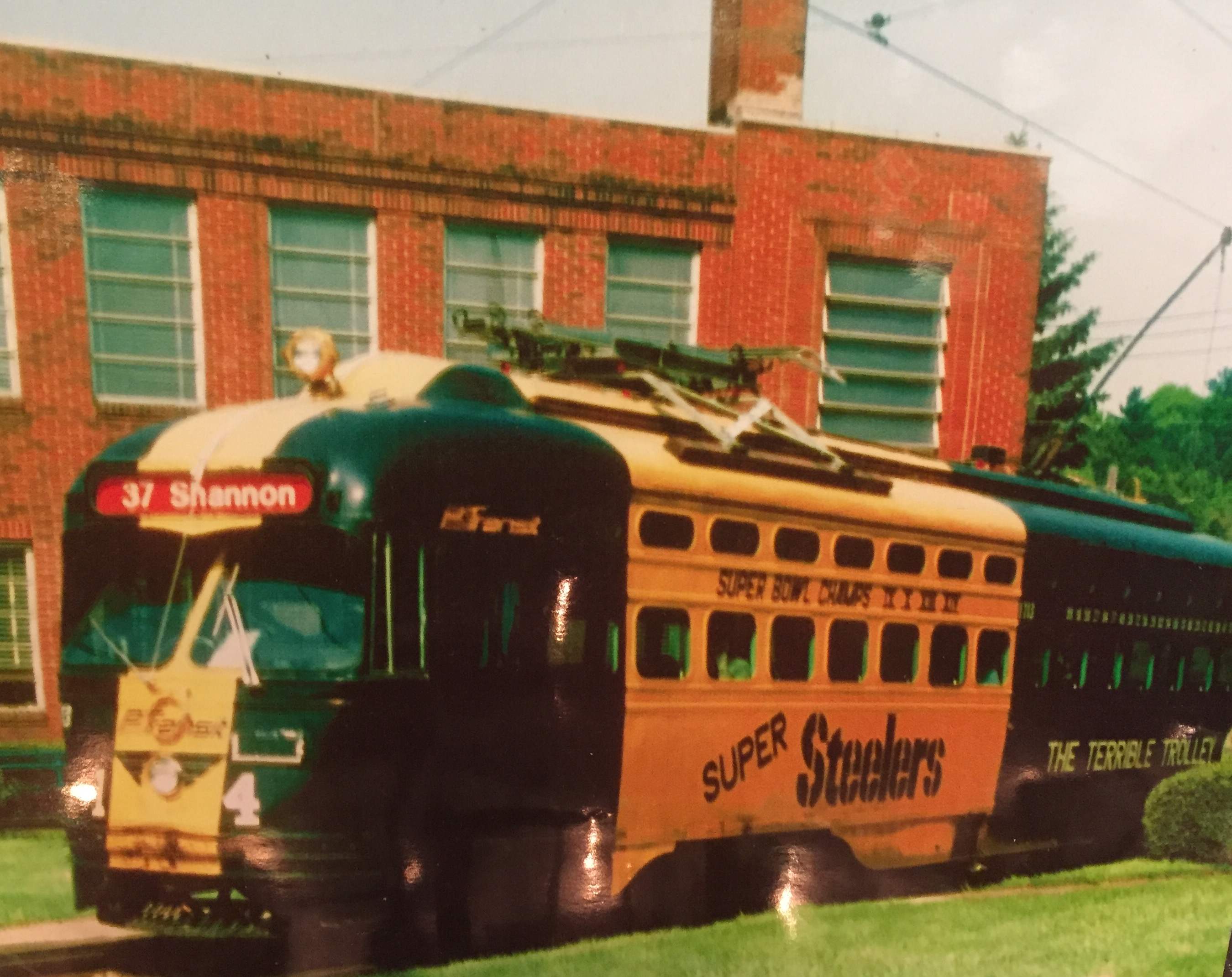Pittsburgh’s Trolley Legacy: From Streetcars to Light Rail
Once a vital part of daily life, Pittsburgh’s trolley system connected communities and shaped the city’s transportation history

In Mister Rogers’ Neighborhood, the iconic trolley was more than just a mode of transportation. It symbolized a bridge between reality and imagination - a transition from Mister Roger’s home to the Neighborhood of Make-Believe. And back at the height of their popularity, in the late 19th century, people in Pittsburgh and the surrounding areas used trolleys - also known as streetcars - to travel everywhere. Pittsburghers rode them from the suburbs to downtown for theater, dining, and shopping - they rode them to and from work and school and even Kennywood. Taking the streetcar was a way of life - and the memory of it is still deeply embedded in our area’s culture and identity.
At the height of streetcar popularity and ridership, nearly 600 miles of trolley tracks lined the streets. By the early 20th century, Pittsburgh’s trolley network was one of the most extensive and efficient systems in the country. The city’s innovative approach when it came to streetcar planning and execution was just the first in a series of first-of-their kind transportation breakthroughs born in Pittsburgh, including being one of the first cities to integrate busways into its transit system.

As automobiles increased in popularity and the suburbs grew, Pittsburgh’s streetcar system began to decline. By the mid-twentieth century, the flexibility and lower cost of cars gradually began replacing streetcars. Over time, the streetcar lines were dismantled. In 1964, the Port Authority of Allegheny County (now PRT) took over the remaining trolley routes and launched a new era of public transportation.
Unlike other American cities that eliminated their streetcars entirely, Pittsburgh retained a portion of its system, modernizing it into today’s Light Rail service. More commonly known as “the T,” this transformation began in the 1980s when PRT upgraded tunnels and dedicated right-of-ways to accommodate a contemporary rail system. Today, the T serves as a critical link between downtown Pittsburgh and the South Hills, embracing the city’s streetcar past with modern infrastructure.

Today, Pittsburgh’s light rail system, though smaller than its predecessor, remains a vital part of the city’s transit infrastructure. The legacy of the trolleys lives on in the form of The T. While the future of public transit continues to evolve with new technology and urban development, Pittsburgh's history with trolleys promises that the spirit of its streetcar era won’t fade.


